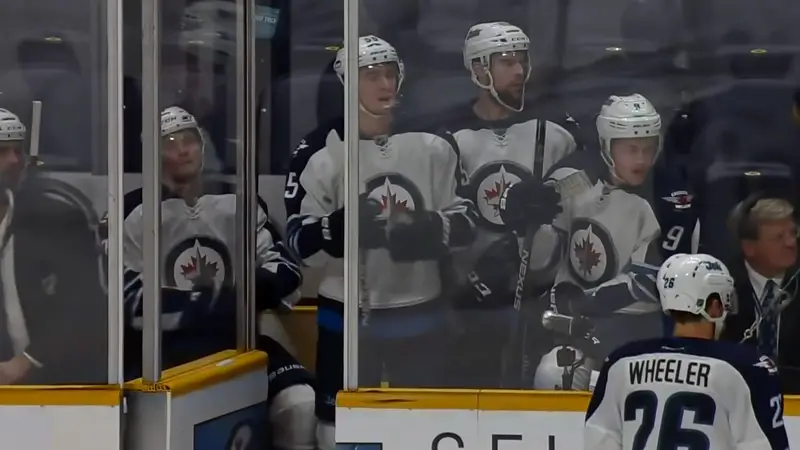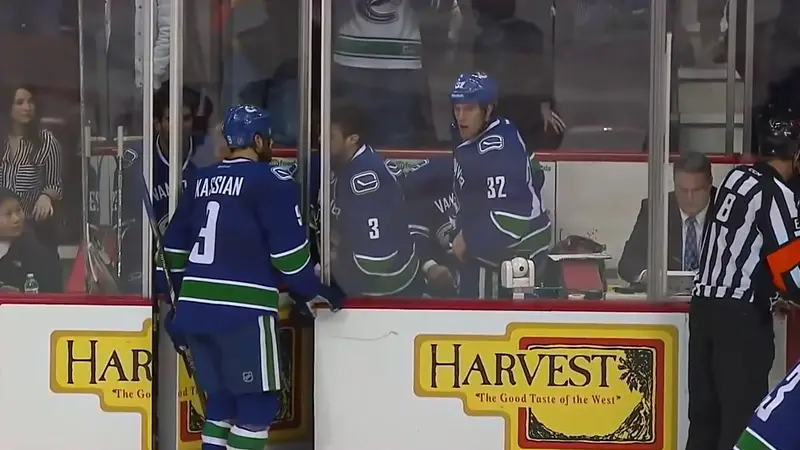Hockey, a sport known for its speed, skill, and intensity, also has a system of rules and penalties designed to keep the game fair and safe.
t the heart of this system lies a small but significant space: the penalty box, or as it’s affectionately known, “the sin bin.”
More than just a place for players to cool off, the penalty box plays a crucial role in shaping the flow of the game and influencing strategic decisions made by coaches and players alike.
Imagine a crucial moment in a tightly contested match. A star player, driven by the heat of competition, commits a foul.
The referee’s whistle pierces the air, and the player is directed to the sin bin. Suddenly, the dynamics of the game shift.
The offending team is short-handed, facing a power play from their opponents, and the tension in the arena rises palpably. This, in essence, is the power of the penalty box – a small space with an outsized impact on the game.
The Evolution of Discipline in Hockey
The concept of penalizing players in hockey dates back to the sport’s early days, but the methods of enforcing those penalties have evolved significantly over time.
In the early 1900s, before the dedicated penalty box came into existence, penalized players were simply instructed to sit on the sidelines.
Can you imagine the potential for chaos and confrontation with players from opposing teams sitting side-by-side?
This system, as one might expect, was less than ideal. It wasn’t until the 1930s that the dedicated penalty box, a separate space designated for penalized players, was introduced. This marked a turning point in maintaining order and decorum within the game.
The evolution of the penalty box didn’t stop there. The 1950s saw the introduction of the distinction between minor and major penalties, adding another layer of nuance to the system.
Minor penalties, typically two minutes in duration, are given for less serious infractions, while major penalties, lasting four or five minutes, are reserved for more egregious fouls.
The advent of video review in the 1990s further refined the process of making and reviewing penalty calls.
Now, referees can use video replays to ensure the accuracy of their decisions, adding a level of accountability and fairness previously unattainable.
Anatomy of the Penalty Box: Inside the Confines

The penalty box, despite its significance, is a rather spartan space. Typically measuring around 5 by 5 feet, it features a single bench and a prominently displayed time clock that serves as a constant reminder of the player’s temporary exile.
Located directly across the rink from the player benches, the penalty box is designed to be easily accessible to players while keeping them visually separated from their teammates and the ongoing action.
Adjacent to the penalty box is a designated area for referees and linesmen. This space serves as a neutral ground where officials can discuss calls, communicate with off-ice officials, and ensure the smooth operation of the penalty system.
Stepping into the Box: Understanding Common Infractions
The road to the penalty box is paved with a variety of infractions, each carrying its own specific penalty duration and impact on the game. Let’s break down some of the most common reasons players find themselves facing the timekeeper:
Tripping
Impeding an opponent’s progress by placing a stick, knee, foot, or any other body part in front of their legs, resulting in a fall or loss of balance. Tripping typically results in a two-minute minor penalty.
Hooking
Using the stick to impede an opponent’s progress by hooking or pulling them. Like tripping, hooking usually earns the offender a two-minute stay in the sin bin.
Slashing
Swinging the stick at an opponent, regardless of whether contact is made. The severity of slashing can vary, resulting in either a two-minute minor penalty or a more significant five-minute major penalty.
High-Sticking
Carrying the stick above the shoulders and making contact with an opponent’s head or face. Due to the potential for injury, high-sticking is considered a serious infraction and can result in a two- to four-minute penalty, depending on the severity and intent.
The Unsung Heroes: The Role of Off-ice Officials
While the spotlight often shines on the players battling on the ice, the off-ice officials play a vital role in ensuring the smooth operation of the penalty box and, by extension, the fairness and integrity of the game. These dedicated individuals, working diligently behind the scenes, are the unsung heroes of the sin bin.
Their responsibilities are multifaceted and demand a keen eye for detail and an unwavering commitment to upholding the rules. They are tasked with:
Door Management
Ensuring the safe entry and exit of players to and from the penalty box. This may seem straightforward, but in the heat of a fast-paced game, it requires vigilance and quick reflexes to prevent any disruption to the flow of play.
Time Tracking
Meticulously monitoring the penalty time served by each player, ensuring that players are released back onto the ice at the precise moment their penalty expires.
A few seconds too early or too late can have significant repercussions on the game, making accurate timekeeping crucial.
Rule Adherence
Enforcing the rules within the confines of the penalty box, ensuring that players remain seated, refrain from communicating with spectators, and generally conduct themselves in a manner befitting the spirit of the game.
Communication
Relaying crucial information between referees on the ice, players in the box, and scorekeepers, acting as a vital link in the chain of communication that keeps the game running smoothly.
Conclusion: A Small Box with a Big Impact
From its humble beginnings as a simple off-ice punishment to its current status as a crucial element of the game, the penalty box has come a long way.
It’s a testament to the evolution of hockey itself, a sport constantly striving to find a balance between skill, intensity, and fair play.
The penalty box serves as a reminder that even in a sport renowned for its physicality, there are lines that cannot be crossed.
It’s a symbol of accountability, ensuring that players are held responsible for their actions and that the game is played within the boundaries of sportsmanship and respect.
Ultimately, the penalty box, despite its small size, plays a significant role in shaping the narrative of hockey.
It adds a layer of strategy, suspense, and even humor to the game, reminding us that even in the most intense moments, the human element shines through.





James Felix